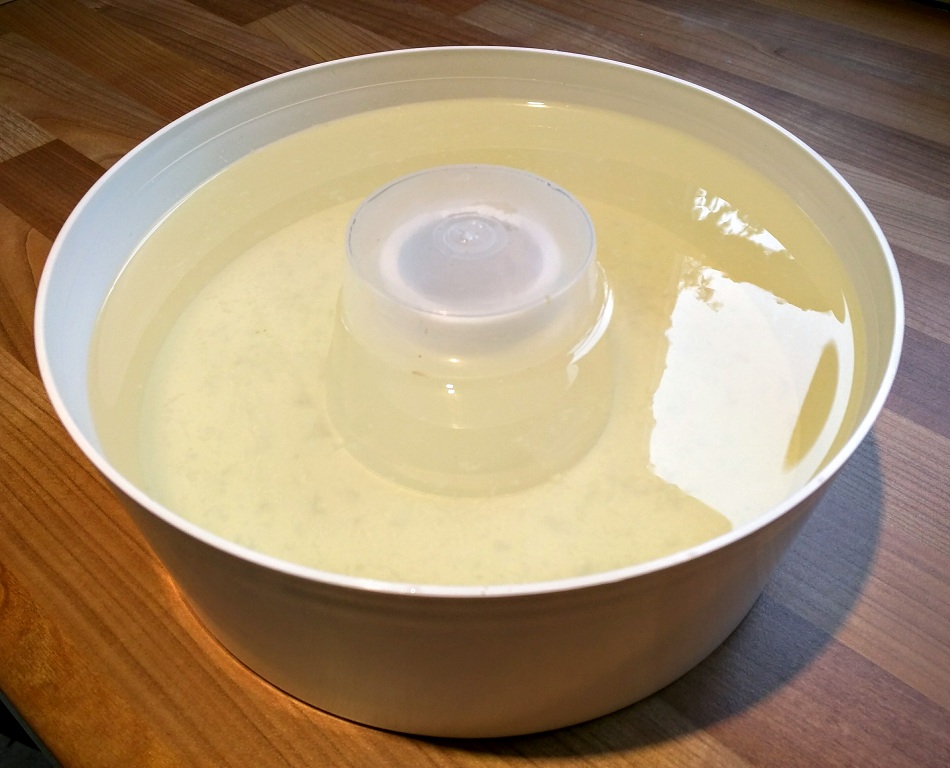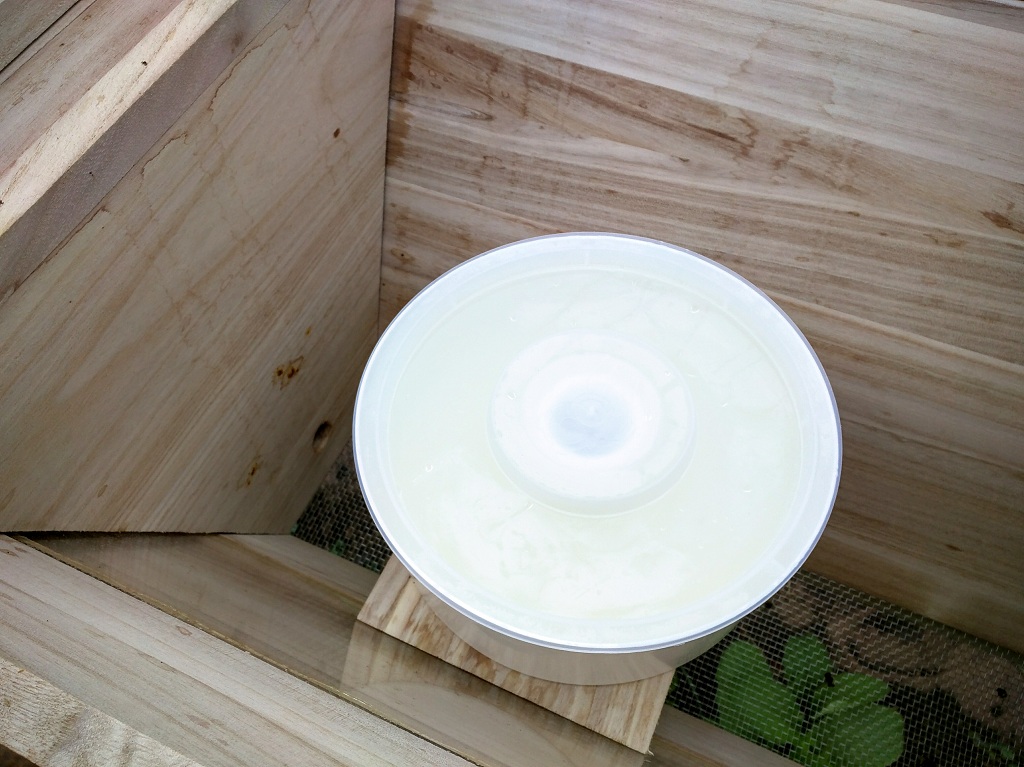Feeding bees
A few weeks ago we <a href=” GHOST_URL/beginning-beekeeping/%E2%80%9D%3Eintroduced our new bee hive and mentioned that we’re proactively feeding the bees to help them build up their stores for the winter. Those of you who’ve never kept bees may find the idea of having to feed them a little strange (we certainly did at first) so we thought it’d be interesting to explain what’s involved.
N.B. Most of the following is specific to feeding bees in a Top Bar Hive (as this is the only type of hive we have). There are many other ways of feeding bees in other types of hive and even with different types of feed (e.g. baking fondant) but we’re only telling you about what we’ve tried so far. :-)
What do you feed bees?
Amazingly, the closest humans can get to replicating the bees usual food source – nectar from the plants they’re pollinating – is a syrup made with plain white granulated sugar. The syrup can be made in various concentrations depending upon the time of year but so far we’ve gone for a ratio of 1:1, dissolving one kilo of sugar in a litre of water, which the bees seem to be happy to take.
Once the sugar has been dissolved in warm water it can be transferred to a feeder and given straight to the bees. However, as the syrup makes a very good habitat for mould to develop on we also add a squeeze from half a lemon to reduce the pH of the solution and keep it fresher for longer. The photo below shows our rapid feeder topped up with sugar solution and ready to be put into the hive – the small bits you can see floating on the service are from the lemon juice.

How do you feed bees?
Once the feeder is full of syrup it’s then a simple case of opening up the hive and putting the feeder in. The feeder is positioned on a board with a hole in it which is lined up with the middle of the feeder to allow the bees to crawl up from below and access the syrup. This board is placed on the other side of a partition in the hive which makes it easier to remove and replace the feeder without disturbing the colony. You can see both the feeder board and the partition (known as a ‘follower board’) in the photo below.

After positioning the feeder on the feeding board it’s a simple case of dripping some syrup down the inside of the feeder and onto the mesh at the bottom of the hive to let the bees know that breakfast / lunch / dinner has been served. They then crawl through the hole near the bottom of the follower board and along the sides of the hive until they reach the feeder and will keep doing so for the next couple of days until it’s empty. That’s all there is to it.
What’s next?
We’ll keep feeding our bees whilst it’s still warm enough for them to fly. Eventually it will get too cold for them to even travel the short distance inside the hive to reach the feeder but by that point they should have had time to store sufficient honey away to last them through the winter. We’re encouraged by the fact that they now have several full bars of stores in the hive, but we won’t really know if that’s enough until they (hopefully) emerge next spring. If they do make it through then we’ll have an established colony to pollinate our early crops next year, and might even be able to get a bonus jar of honey or two once the local oilseed rape is in flower. Here’s hoping they make it!